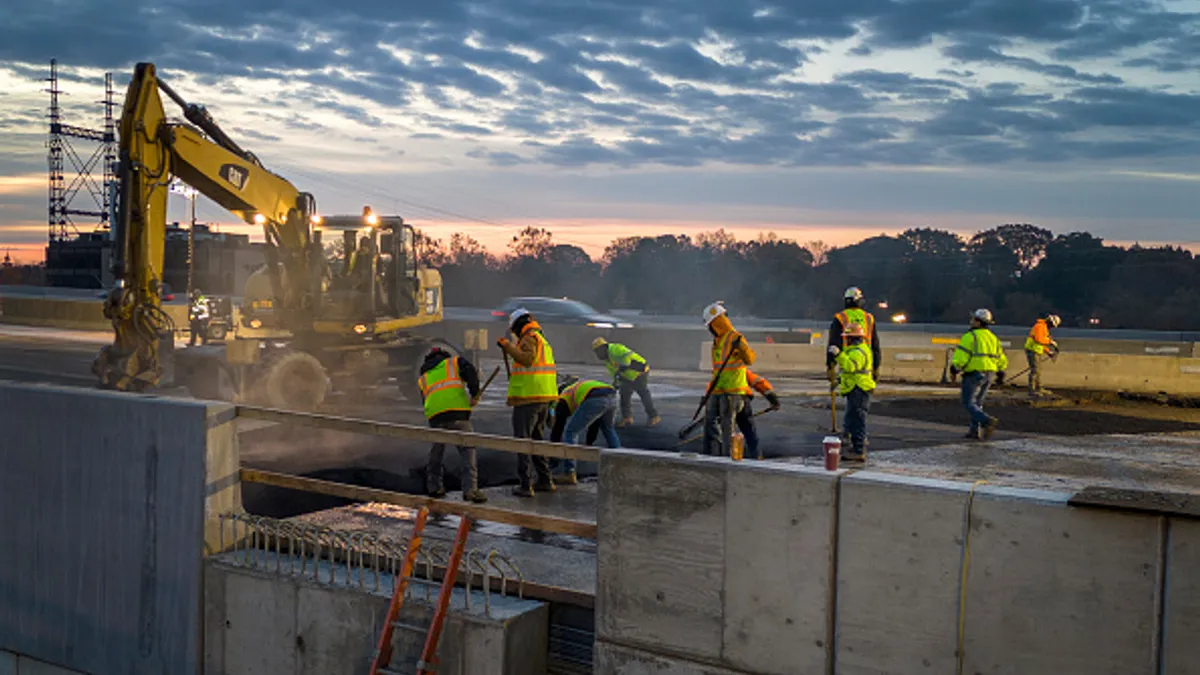This feature is a part of "The Dotted Line" series, which takes an in-depth look at the complex legal landscape of the construction industry. To view the entire series, click here.
A New York state law that aims to combat wage theft in the construction industry went into effect on Jan. 4. New York Senate Bill 2766-C makes general contractors responsible for ensuring all workers on a project, including those employed by subcontractors, are correctly paid. It also imposes more stringent reporting requirements for subcontractors.
The law aims to encourage the industry to combat wage theft itself by making prime contractors liable for "any unpaid wages, benefits, damages, attorney fees related to a civil or administrative action." The liability is limited to a period of three years: An individual or a representative can file a lawsuit against their employer-subcontractor and the prime contractor during that time. The act amends New York's labor law and general business law.
"Particularly for day laborers or for employees of small contractors, if their wages aren't paid in full on a project, or if the company goes under and doesn't pay them, there might not be any avenue of recourse," said Aaron Brotman, an associate and member of the Construction Services Practice Group at national law firm Cole Schotz. "What this law does is provide the general contractor or prime contractor as the avenue of recourse."
Under the new law, if a subcontractor at any tier withholds certain requested information or doesn't provide certain payroll records, the prime contractor can refuse to pay subs for the work they've done on a project until they comply. "I imagine there will be insurance programs that will pop up because of this," Brotman said.
Prime contractors generally have more financial resources than subcontractors. According to Brotman, lawmakers likely reasoned they would be capable of compensating shortchanged workers if their subs aren't willing or able to. Prime contractors also have more expertise and ability to manage the day-to-day operations of a job than project owners, who are not held responsible for unpaid wages under the new law.
Wage theft is a critical issue
Wage theft is a multi-billion dollar problem that spans industries across the United States; according to Brotman, it dwarfs property crime costs in the country. A 2017 wage theft study from the Economic Policy Institute found that 32.3% of New York construction workers' earned wages were not paid — the highest share out of all the industries surveyed.
In December, the U.S. Department of Labor ordered three Long Island concrete supply and construction companies and their owner, Manuel Macedo, to pay workers nearly $1 million in back wages and damages and $53K in penalties. According to the DOL release, Macedo schemed to deny overtime pay to 99 laborers for three years.
The earned pay and overtime wages that employers illegally withhold totaled in the hundreds of millions of dollars each year, according to the Center for Public Integrity's May 2021 analysis of Department of Labor records from October 2005 to September 2020. Accurate data on the issue is very difficult to gather and analyze because most wage theft goes unreported, and enforcement is under-resourced.
One of the most comprehensive U.S. wage theft studies, published in 2009, found low-wage workers surveyed in Chicago, Los Angeles, and New York City were routinely denied proper overtime pay and were often paid less than the minimum wage. According to CBS, some economists say wage theft is so pervasive that it costs workers at least $15 billion per year.
"This is not a non-problem that they're trying to solve. Whether or not this will be an effective solution and the role of [any potential] unintended consequences, are yet to be seen," Brotman said.
According to Brotman, the misclassification of workers — whether intentional or not — is typically wage theft. Minimum wage violations, overtime pay violations and unpaid "off the clock" work or meal breaks are also common forms. Under the new law, prime contractors are ultimately responsible for any of these violations.
New York's new law seems fairly unique, Brotman said. However, a new Illinois Bill HB3293 also greatly expands prime contractors' responsibility for wage theft, and similarly encourages the industry to police itself. According to Engineering News-Record, it is expected to become law and, if passed, will go into effect on July 1, 2022. In addition, three Texas cities — Austin, Houston and El Paso — recently passed ordinances to address wage theft in the construction industry, though through different methods than New York state. Currently, the federal Davis-Bacon Act as well as certain New York and New Jersey laws offer incentives to ensure workers are paid properly.
'Significant risk' ahead
This law marks a significant change for prime contractors and allows them to monitor subcontractors to ensure that they are being compliant. Even if the prime contractor can prove it did its due diligence to ensure that subcontracted workers were being paid correctly, the new law still holds them responsible for compensating those subcontracted workers if they aren't.
"[The new law represents] significant risk because it's not just your subcontractor, it's everyone down the line. [The prime contractor] is liable for every subcontractor, every sub-subcontractor, if a manufacturer puts someone on site, anyone who performs work on the project," Brotman said. "That means if anyone breaks the law and doesn't pay the workers what they should be paid, [the prime contractor is] on the hook for it."
Brotman offered several tips for contractors working in New York:
1. Understand relevant labor law
The first step contractors should take is to understand all relevant labor laws, Brotman said. For example, they should investigate whether there is a prevailing wage requirement in their region and make sure they comply with it when compensating workers. They must also ensure every worker on the project is appropriately classified and know what everyone on a project is due.
2. Tighten your contracts
Adding indemnification clauses to contracts can provide additional protection for prime contractors and bolster their efforts to recoup back wages that they cover for their subcontractors if the latter doesn't pay its subs. Middle-tier contractors aren’t held liable under this new law, so if a worker with a sub-subcontractor is owed wages, it recoups them from the prime contractor. With an indemnification clause, the prime contractor can demand repayment for those wage theft costs from its delinquent subcontractor.
"We're beginning to advise our contractor clients to have very strong language in their [contracts] for indemnification from their subcontractors and sub subcontractors in case of any violation of this law in particular," Brotman said. However, he cautions, "If [shortchanged workers are] not getting paid because the money isn't there, it doesn't matter what the contract says."
3. Monitor your subs, and educate them on the law
Prime contractors need to understand and have the wherewithal to look into records — and to demand them if necessary — that justify their subcontractors' decisions on how to classify individual workers and the amount that workers in each classification should be paid on the project, according to Brotman. If a sub doesn't supply the required information, contractors can deny it payment. They should also educate subcontractors on any relevant wage laws.
4. Talk to workers directly
To really ensure there are no wage theft problems, Brotman recommends visiting job sites and talking with workers directly to make sure they aren't running into any compensation problems. "You'd rather know about [any issues] sooner rather than later," Brotman said.
_______________________________________________
The Dotted Line series is brought to you by AIA Contract Documents®, a recognized leader in design and construction contracts. To learn more about their 200+ contracts, and to access free resources, visit their website here. AIA Contract Documents has no influence over Construction Dive's coverage within the articles, and content does not reflect the views or opinions of The American Institute of Architects, AIA Contract Documents or its employees.





















